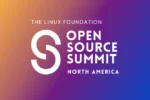This past week, the cognoscenti of the Linux community gathered in San Francisco to discuss the state of the platform as a whole. During the week, a number of projects also managed to release new versions. Here are five you should know about.

Anyone who has ever tried to design a Linux-based device knows that most of the time will be spent pulling things out of the Linux kernel. Companies like Chumby, Motorola and Texas Instruments have been doing this for years and have poured millions of dollars into the practice. Finally, at the Linux Collaboration Summit, the Linux community decided to put an end to this tedious process.
The Yocto project is designed to provide developers with an extremely slimmed-down Linux platform, specifically tailored to ARM or x86 chips. Instead of ripping chunks out of an existing Linux kernel in order to make a slim, trim OS for devices, Yocto starts tiny, and allows developers to add only what they need to make the system work.
Jim Zemlin, director of the Linux Foundation, said that Yocto directly addresses the “suckage” of this process by bringing together many large companies dedicated to embedded Linux. Instead of spending their time slimming their kernels, they can all now start on a level playing field with a super-small Linux that has the bare essentials built in.
#!

It’s been a long time coming, but Gnome 3.0 is finally complete and available for Linux users. This desktop windowing environment is has been the standard for Red Hat and Ubuntu for years, but was recently cast aside by Ubuntu in favor of a homegrown solution known as Unity. At issue was the lack of touch-screen support in Gnome. And while this support remains preliminary, Gnome 3.0 includes a host of new features, such as a redesigned set of control panels, a slicker desktop and menuing experience, and built-in support for instant messaging.
#!

The Linux Foundation has been creating and helping working groups to focus on Linux problems for almost five years now. But one topic that hasn’t been addressed by a working group has been high availability Linux. Until now.
With Linux running at the heart of 75% of the world’s trading markets, and under the hoods at countless financial service companies, it was time to bring those folks together to discuss ways of making the platform more stable.
“The Linux Foundation’s HA Working Group will bring together leading projects to collaborate on a common set of components and priorities to support this growing area in the enterprise,” said Zemlin. “The collaborative development model can accelerate the advancement of key technologies, and we expect the HA Working Group will do just that.”
#!
This updated specification hit 5.0 at the Linux Collaboration Summit. It’s focused on telecommunications players, and distributions based on this specification are considered to be ready to host phone switches and cell phone network systems. Improvements in this release include:
• Increased focus on highly reliable, highly available file systems including, data protection, data portability, and backup and redundancy requirements.
• Carrier and data-center security gaps, including role-based access control, and data access auditing and tracing.
• Expanded diagnostics and debugging support, including per-thread identifiers for debugging and a system black box.
• Online system tuning features, allowing applications to determine and optimize themselves for the specific system architecture on which they are running.
#!

In honor of Linux’s 20th anniversary, the foundation is encouraging users to create videos explaining why they use Linux, what Linux means to them, and what this anniversary says about open-source software and humanity in general. An inspirational video can be found at http://www.youtube.com/watch?v=5ocq6_3-nEw, and the final submissions will be judged by Linus Torvalds himself.
That is very appropriate, as Torvalds was just in Hollywood with his wife, where they attended some of the Academy Award after-parties. He blogged about the event, pointing out that he and his wife spent much of the evening befuddled and confused, unable to identify any of the A-list celebrities they met. Keeping on top of Linux doesn’t leave much time to stargaze, after all.






